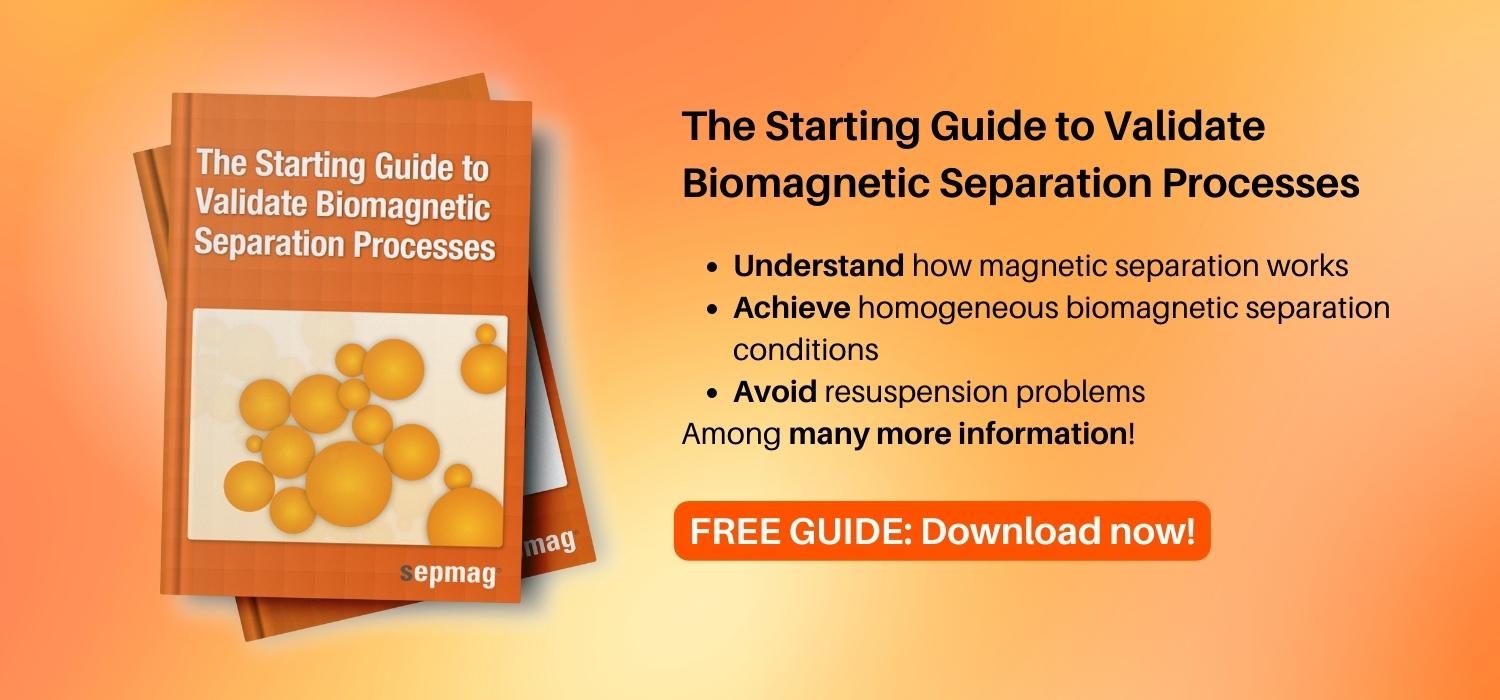The cornerstone of any good production process is the ability to have robustness and reproducibility, especially in the biotech industry and in the magnetic bead separation industry.
This post is about magnetic bead separation and how to validate this process. If you are interested in this topic, and are willing to learn more about it, download our Free Guide The Starting Guide to Validate Biomagnetic Separation Processes:
- Robustness means that process is efficient and easy to follow in order to obtain an end product.
- Reproducibility means that the process is repeatable over time and with different volumes of material.
The biotech industry often uses live biomaterial that is complex, delicate and sometimes problematic to handle. Therefore, it is advantageous for a biotech company to spend resources and time to develop and define its production process and to train all of the technicians to follow procedures precisely.
Traditional vs modern magnetic bead separation devices
In the biomagnetic separation industry, production managers tend to expend much of their efforts determining the parameters of the process to the nth degree, often leaving out one of the most important parameters: the magnetic separation parameter. They often use traditional magnetic separators to perform the task at hand without understanding all of the critical aspects and implications of using these devices in the resulting quality of their end product.
Unfortunately, with traditional magnetic separators, not all of the beads experience the same conditions. Beads that are close to the magnet are fully magnetized and are exposed to a high magnetic force over long periods of time, many times causing irreversible aggregation, loss of magnetic activity and problems with resuspension. Beads that are far from the magnet experience variable magnetization while they are traveling to their final point. Variable magnetization can affect the properties of the bead by reducing the magnetic force overall and slowing down the separation process. When doing this sort of work in high volumes, the distance problems are exacerbated.
Because of this, the magnetic separation process fails to achieve standard quality control. Often, beads are not consistent with each other within a lot and do not work consistently with varying batch volume of material.
The more modern magnetic bead separation techniques utilize separators that create a homogeneous, well-defined magnetic force no matter how far the bead is from the magnet. Therefore, all beads experience the same magnetic force. Because of this, results are reproducible over time and with all volumes of processed material; a crucial point to consider when deciding which separator to use.
If you found this article interesting and want to get a deeper insight in the topic of magnetic bead separation, make sure to check these articles from our blog:






